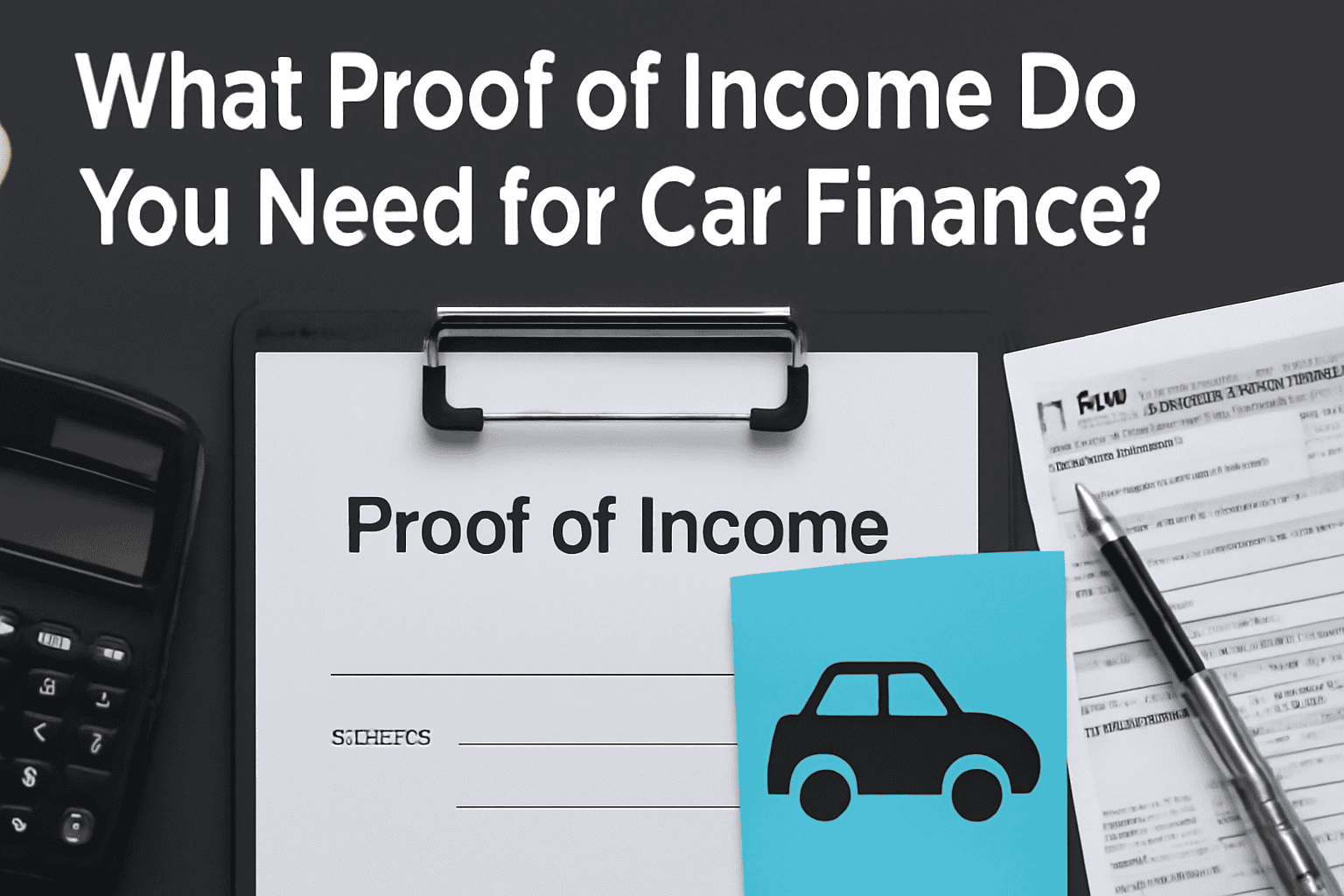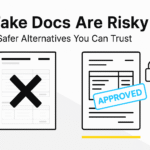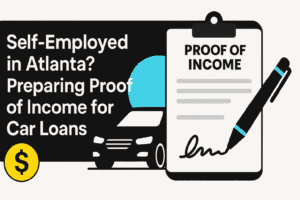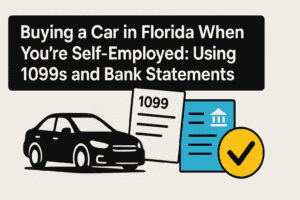What proof of income do you need for car finance?
Last updated: August 2025
Securing car finance goes beyond choosing the right vehicle or lender. Lenders in the US, UK, and Canada require proof of income to ensure you have the ability to repay the loan. Depending on whether you’re a salaried employee, a contractor, or a self-employed business owner, the documents you need to provide can vary. Understanding what’s required and submitting it in a clear, organized way can lead to quicker approvals and prevent unnecessary delays.
Proof of income for car finance typically involves recent pay stubs, tax forms, and bank statements. Though the exact requirements may differ by country and lender, underwriters need verifiable proof that your reported income aligns with your bank deposits and tax returns. In the US, lenders typically ask for recent pay stubs and W‑2s for the past two years. In the UK, expect to provide payslips from the last three months, plus a P60 or Tax Year Overview. In Canada, pay stubs and a T4 or Notice of Assessment (NOA) are commonly requested. Self-employed applicants, across all regions, generally need to submit bank statements, 1099 forms, SA302 tax calculations, and year-to-date profit-and-loss statements.
At FinancialDocsProvider.com, we help ensure your documentation is clear and easy to verify — without altering any data. Our services organize your documents in a way that complies with regulations, making them easy for lenders to assess. This guide will walk you through the various proof of income requirements, the legal guidelines for document preparation, and what you can and cannot modify. You’ll also find tips, checklists, and resources to help you assemble a flawless proof of income packet.
Related Entities & Terms
- Pay stub / payslip / paycheque / payroll statement
- W‑2, 1099‑NEC/1099‑MISC (US); P60, P45 & SA302 (UK); T4, Notice of Assessment (NOA) & Proof of Income Statement (Canada)
- Verification of employment (VOE); debt‑to‑income (DTI) ratio; affordability assessment
- Bank statements, P&L statements, invoices, receipts, and letters of employment
- Regulators: CFPB, FTC, IRS (US); FCA & GOV.UK (UK); FCAC & CRA (Canada)
- KYC/AML, source‑of‑funds, and anti‑fraud checks
- Hire purchase (HP), personal contract purchase (PCP) and instalment loans
- PDF formatting: redaction, OCR, bookmarks, metadata hygiene
- Proof of income editing and bank statement formatting services

What are the legal basics of proof of income for car finance?
The rules governing income verification differ slightly by country but generally share one principle: lenders must rely on accurate, independently verifiable information. Presenting falsified or altered documents can lead to severe penalties, including fines or criminal charges. Lenders will often cross-check your records against tax filings and bank statements to ensure consistency. Here, we outline the key regulations in the US, UK, and Canada to help you understand what’s legally required.
United States: consumer finance rules and disclosures
In the US, the Consumer Financial Protection Bureau (CFPB) and the Federal Trade Commission (FTC) regulate lending practices to ensure transparency and protect borrowers. Auto lenders calculate your debt-to-income ratio using pay stubs, W‑2s, tax returns, and bank statements. The CFPB suggests gathering a pay stub from the last 30 days, W‑2s from the past two years, and recent bank statements to facilitate underwriting. According to the Truth-in-Lending Act, lenders must provide clear disclosures regarding loan rates and fees. Document edits are permitted only to improve readability, such as rotating images or converting formats. Any changes to numbers, dates, or payees are considered fraudulent.
It’s also crucial to keep original records. The IRS recommends retaining tax returns and supporting documents for as long as needed to substantiate income and deductions. If there’s an issue with a document, it’s best to request a corrected version from the source rather than attempting to “fix” the file yourself.
United Kingdom: FCA creditworthiness & independent evidence
The Financial Conduct Authority (FCA) requires lenders to evaluate creditworthiness and affordability using independent evidence. Most UK lenders ask for three months of payslips or a P60, plus bank statements to verify income deposits. If you’re self-employed, you may be asked to submit HMRC’s SA302 tax calculations and a Tax Year Overview. Lenders may request additional documentation if your income fluctuates, such as overtime or commissions.
Under UK law, lenders must also consider other financial commitments, like rent or childcare costs, when evaluating affordability. Presenting a clear financial picture ensures the loan fits within your budget.
Canada: federal & provincial protections
In Canada, both federal and provincial regulators oversee lending practices. Lenders often request recent pay stubs and a T4 slip for employment verification. You can also provide a Notice of Assessment (NOA) from the Canada Revenue Agency (CRA) as additional proof of income. Altering T4s or NOAs is illegal and can result in severe consequences.
The Financial Consumer Agency of Canada (FCAC) outlines your rights when applying for vehicle financing and encourages borrowers to compare offers from different lenders. If you’re missing any required documents, it’s safer to request them through official channels rather than attempt any risky alterations.
Which edits are allowed when preparing your documents?
Lenders focus on substance, not style. You’re legally allowed to make changes that improve the readability and privacy of your documents as long as you don’t alter any essential details. Below are some common edits that will help streamline your documents without breaking any rules.
- Redaction of sensitive details: It’s acceptable to redact portions of your Social Security number, National Insurance number, or bank account number while leaving the key details such as names, dates, and amounts fully visible.
- Improving legibility: You can rotate, crop, or adjust the contrast of documents to make earnings, pay periods, and year-to-date totals more readable. Converting screenshots into searchable PDFs also enhances clarity.
- Merging and bookmarking: Combine documents such as pay stubs, bank statements, tax forms, and letters into one PDF. Add bookmarks for easy navigation and a cover sheet to orient reviewers.
- File conversion and compression: Convert spreadsheets or images into PDFs, apply OCR to make them searchable, and compress large files to ensure your packet is easy to handle.
- Annotations and highlights: You can use sticky notes or callouts to explain pay period dates, YTD totals, or deposits but never overwrite fields in your documents.
- Ordering and page numbering: Organize pages in chronological order and add page numbers (e.g., “1 of 6”). Remove duplicates, and only include the clearest versions of documents.
If you’re unsure about any edits, ask us for guidance. Our editing service focuses on clarity: we’ll merge files, apply redactions, and deliver a polished, professional-looking packet. We’ll never alter figures, dates, or parties and will reject any work that crosses legal boundaries. To learn more, read our guide on how many pay stubs you need or check out our comparison of pay stubs vs W‑2s.
What edits are illegal when assembling your proof of income?
Any modifications that misrepresent the facts are considered fraudulent. Lenders and regulators treat falsified documents as a serious offense, regardless of the size of the alteration. Here are examples of edits that cross the line:
- Changing numbers or rates: Altering gross or net pay, hourly rates, or modifying tax withholdings to qualify for a larger loan is illegal.
- Backdating or inventing pay periods: Manipulating pay dates or adding extra cycles to make employment appear longer misleads lenders and is easily detected when deposits don’t align.
- Fabricating employers or contacts: Creating fake employer names, addresses, or HR contacts constitutes forgery and can lead to identity theft charges.
- Editing official tax forms: Official records such as W‑2s, P60s, T4s, SA302s, and NOAs should never be altered, as doing so is a direct violation of federal and state laws.
- Manipulating bank statements: Adding or removing deposits, or hiding overdrafts is illegal. Many financial institutions use automated systems to detect inconsistencies across documents.
- Re-typing or recreating documents: Retyping unclear pay stubs or recreating them from scratch is not considered formatting, but rather fabrication.
Engaging in these practices can result in loan rejection, fines, or even criminal charges. The Federal Trade Commission (FTC) has pursued enforcement actions against auto dealers for inflating consumer incomes on financing forms. Always provide honest records. If there is an error, contact your employer or bank to obtain a corrected document rather than attempting to alter it yourself.
When do you need professional document formatting?
Every individual’s income sources and document types differ. Your proof of income package will depend on factors like your employment status, pay frequency, and location. Here are common scenarios and the documents you’ll need to provide.
Employees: W‑2 earners & payslip holders
If you’re a salaried or hourly employee, lenders typically require recent pay stubs along with annual tax forms. In the US, expect to provide one or two pay stubs covering the last 30–60 days and W‑2s from the past two years. UK lenders will likely request the last three months of payslips and may cross-check with a P60 or Tax Year Overview. In Canada, recent pay stubs and a T4 or NOA are generally required.
Mini-scenario: You’re employed in the US and paid bi-weekly. You submit two recent pay stubs showing your year-to-date earnings and a W‑2 from the previous year. A cover sheet explains your pay variation due to overtime and indicates that your bank deposits match the net pay on the stubs. This level of detail helps underwriters verify your income swiftly.
Self-employed & contractors
If you’re an independent contractor, freelancer, or business owner, you won’t have employer-issued pay stubs. Instead, lenders typically rely on other types of documentation. In the US, you’ll need 1099 forms, Schedule C, and two years of tax returns. In the UK, provide HMRC’s SA302 tax calculation and a Tax Year Overview. In Canada, self-employed individuals should submit a Notice of Assessment, T1 General, and several months of bank statements.
Mini-scenario: You work as a rideshare driver and receive weekly payments. We compile your 1099-K forms (US) or platform summaries, match each deposit to your bank statements, and create a year-to-date profit-and-loss summary. Annotations clarify peak earning weeks and the seasonality of your income, helping underwriters understand your income patterns.
New hires & variable income
If you’ve recently started a job or have variable income, your proof of income packet will look different. In the US, lenders may accept an offer letter along with your first pay stub. UK lenders might request an employment contract, while Canadian lenders could ask for an employer letter confirming your salary. Make sure to include bank statements showing your initial deposits and a note explaining things like probationary periods or currency conversions.
Mini-scenario: You work remotely for a UK company while living in Canada. We convert your earnings to CAD on a separate page, mention the exchange rate used, and tie each deposit to your Canadian bank statements. This transparency helps lenders understand your income sources.
For more examples, check out our in-depth posts on how many pay stubs you need for a car loan and whether car loan lenders accept pay stubs. These articles break down requirements by market and include more mini-scenarios.
How does our process work?
At FinancialDocsProvider.com, we specialize in formatting and packaging financial documents to make them compliant and easy for lenders to review. Our four-step process ensures that you submit a complete, accurate, and organized packet without altering any of the underlying data.
- Intake & consultation: You upload your documents (pay stubs, bank statements, tax forms, and letters) via our secure portal. We verify that your request pertains only to formatting and organization.
- Reconciliation & audit check: We cross-check figures between documents to ensure consistency. If there are discrepancies, we will reach out to you for clarification before moving forward with formatting.
- Formatting & redaction: We merge documents, adjust orientations, optimize resolution, and redact sensitive data. Your packet will be a clean, searchable PDF ready for lender review.
- Delivery & support: Within 24–48 hours, you will receive your formatted documents. Our team is available for minor tweaks or additional formatting, but we will never alter amounts, dates, or any other critical information.
If you need help organizing your documents, explore our proof of income editing and bank statement formatting services. For more details, visit our About Us page.
What should be on your car finance proof of income checklist?
Having a thorough packet minimizes the chances of delays or rejections. Follow this checklist to assemble your proof of income documents and annotate them to help reviewers easily understand your financial situation.
- Name consistency: Make sure the employer or payer name is consistent across pay stubs, bank deposits, and the application.
- Time coverage: Ensure you include sufficient periods: one or two recent pay stubs in the US and Canada, three months of payslips in the UK, or more if your income is variable.
- YTD sanity check: Verify that the year-to-date totals align with your pay frequency.
- Deposit labeling: If your bank abbreviates your employer’s name, add a key on a cover sheet (e.g., “ACME PAYROLL = ACME CORP”).
- Legibility & completeness: Include clear scans in correct order, bookmarks for easy navigation, and redact only non-essential information.
- Explain variability: If your income varies due to tips, commissions, or seasonal fluctuations, provide additional supporting records and an explanation.
- Self-employed specifics: Provide tax documents (1099s, SA302s, NOAs) and a concise current-year summary.
- Cross-document consistency: Ensure that names, addresses, dates, pay periods, and totals match across all documents.
- Cover letter: Write a brief note summarizing your employment type, pay frequency, and any unusual items (e.g., bonuses or overtime).
- Preserve originals: Keep unedited copies of all documents for your records and potential audits.
What red flags can cause your documents to be rejected?
Fraud-detection systems and human underwriters look for inconsistencies that might suggest tampering or misrepresentation. Avoid these common pitfalls:
- Mismatched numbers: If your net pay on the stub doesn’t match the bank deposit, provide an explanation for any split deposits, timing differences, or deductions.
- Irregular fonts or spacing: Fake stubs often feature inconsistent fonts or misaligned columns. Always obtain originals from your employer when possible.
- Rounded or repetitive numbers: Identical net pay for every period can raise suspicions.
- Missing contact information: Ensure that your company’s name, address, and phone number are included so that the lender can verify your employment.
- Metadata mistakes: PDFs generated using form generators rather than employer systems can raise questions.
- Lack of supporting trail: Missing W‑2s, SA302s, NOAs, or bank statements can make it harder to verify your income and may result in a rejection.
- Old documents: Pay stubs older than 60 days or missing recent payslips can delay approval.
- Inconsistent pay frequency: If your pay stubs show a weekly frequency but your deposits are semi-monthly, explain this discrepancy.
- Unaddressed name or address changes: If you’ve recently changed your name or address, include documentation to ensure systems match your records.
If you’re unsure about any red flags, contact our team for a pre-check. We’ll help flag issues before you submit your documents to a lender.
Where can you find official resources & further reading?
Here are authoritative links and additional resources to help you better understand proof of income requirements and your rights as a borrower. Official resources will open in a new tab:
- CFPB – Auto loans hub – Learn how to prepare your application, including gathering pay stubs, W‑2s, tax returns, and bank statements.
- FCA – Consumer Credit Sourcebook (CONC) – Details about creditworthiness and affordability assessments in the UK.
- CRA – Get a Proof of Income Statement – Learn how to obtain official proof of income in Canada.
- FCAC – Protections when buying a car – Outlines your rights as a borrower in Canada and tips for shopping for auto financing.
- Truth-in-Lending disclosure – Learn how lenders must disclose rates, fees, and terms when you finance a car.
- Internal guides: Check out our car loan pay stub guide, our article on whether car loan lenders accept pay stubs, and our comparison of pay stubs vs W‑2s for deeper dives. Also check our freelancers’ proof of income guide.
- Need document help? Visit our proof of income editing and bank statement formatting pages for more information, or contact our team for personalized assistance.
FAQs
How many pay stubs do I need for car finance?
The number of pay stubs required depends on your location and lender. In the US, lenders generally ask for one or two recent pay stubs covering the past 30–60 days. UK lenders often require the last three months of payslips. Canadian lenders typically accept one or two recent stubs but may also request a T4 or NOA for additional verification.
What if I don’t have pay stubs because I’m self-employed?
Self-employed individuals should provide bank statements (typically covering 3–6 months) along with official tax documents. In the US, this includes 1099s and your latest tax returns. In the UK, submit an SA302 tax calculation and Tax Year Overview. In Canada, provide a Notice of Assessment and T1 General. A year-to-date profit-and-loss statement is also helpful.
Can I use bank statements instead of pay stubs?
Yes, in some cases. Lenders may accept bank statements, especially for self-employed or variable-income applicants. Ensure the deposits match your reported earnings and that descriptions on your bank statements align with the payer names on your application. It’s also helpful to include supporting documents like tax forms or employer letters.
Is it legal to edit a pay stub for clarity?
You can edit a pay stub for readability, such as cropping, rotating, adjusting contrast, or redacting non-essential information. However, altering figures, dates, payees, or rates is illegal and considered fraudulent.
What happens if I submit fake income documents?
Submitting fake or altered documents is risky. Lenders cross-check your information against tax records, employer databases, and bank deposits. Discrepancies may result in loan denial and legal consequences. Always provide genuine records and choose a loan amount you can afford.
Need accurate, reliable financial documents fast? Contact FinancialDocsProvider.com now.








Add comment